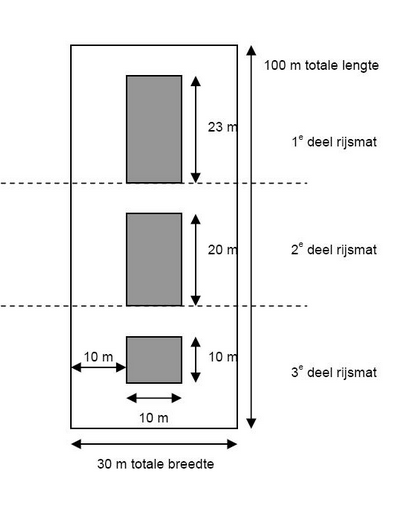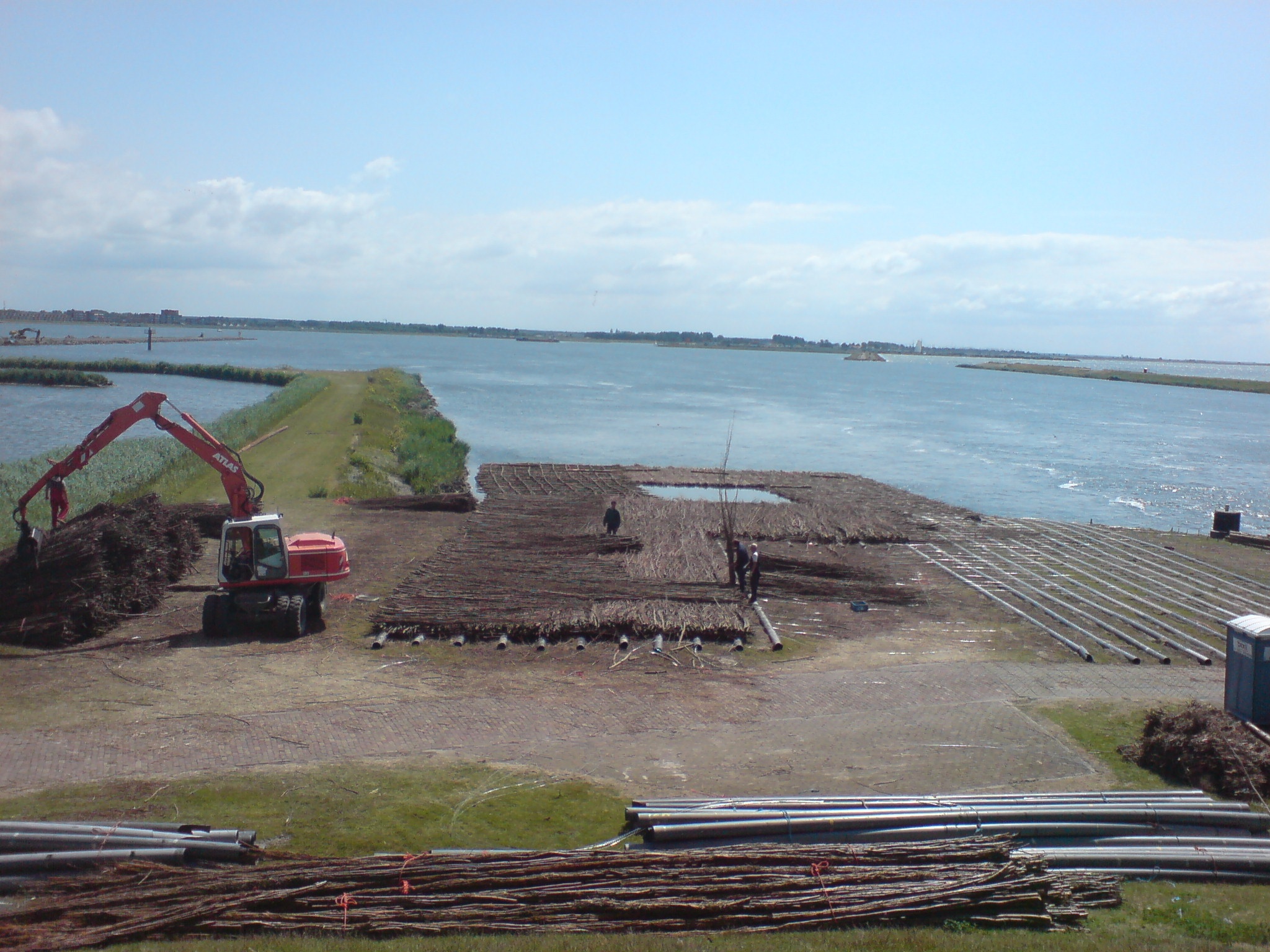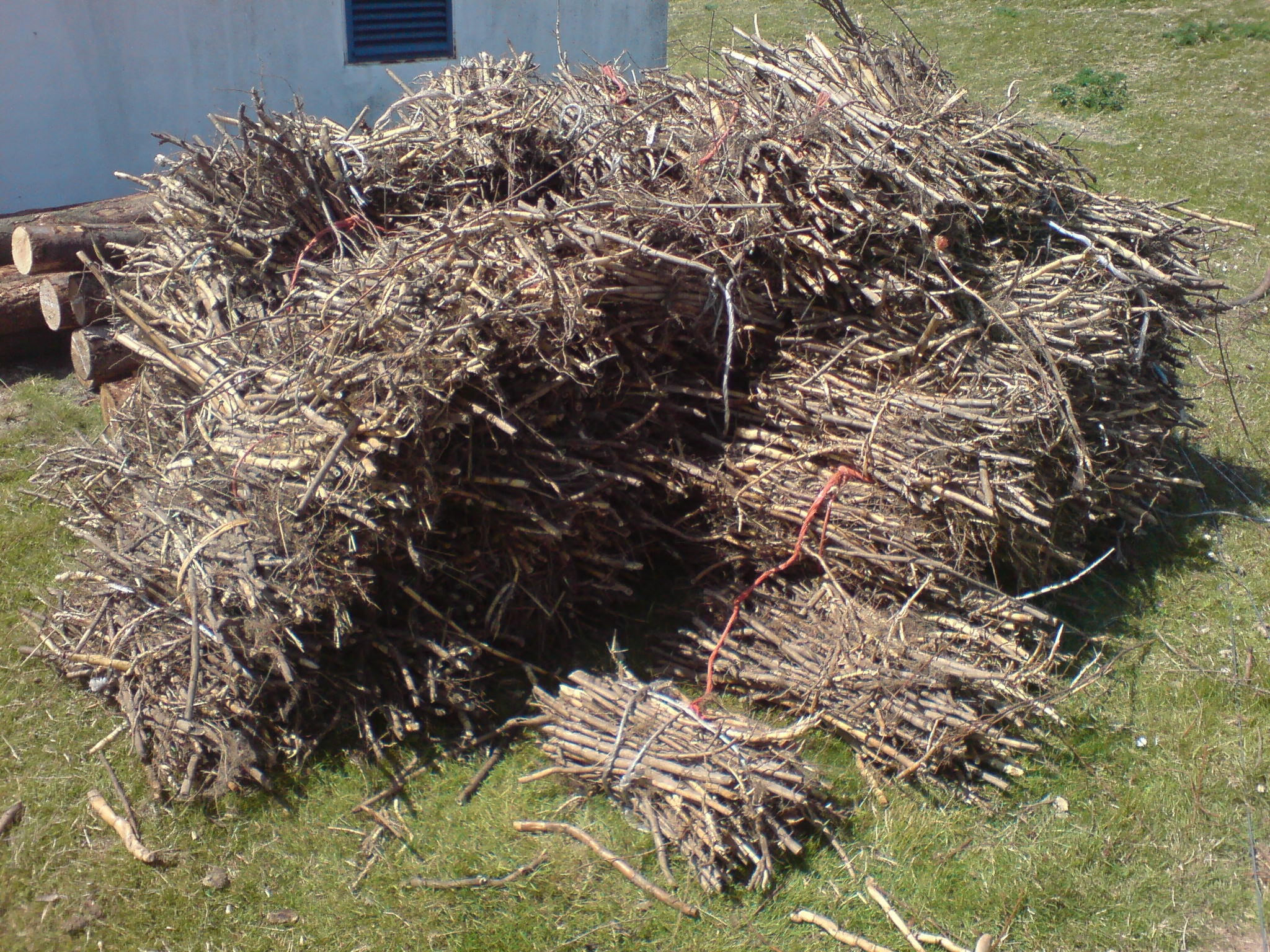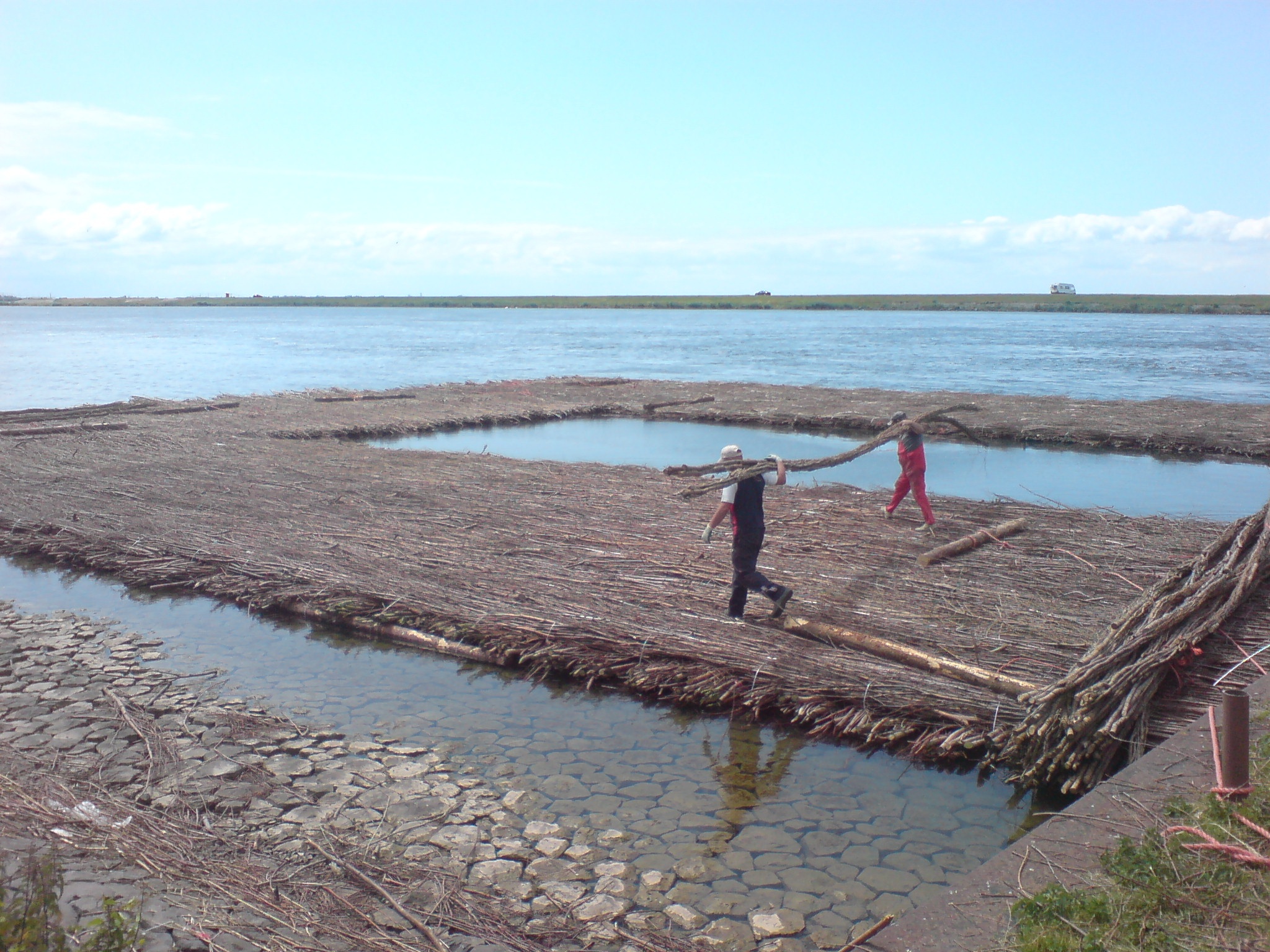Planning and design
The floating marsh was designed to improve ecological quality, while additionally sustaining dike safety (van Geest et al. 2010). The marsh will function as a wave attenuator, and thus reduce wave impact on the dike. Underneath the floating marsh, low-energy zones will exist that allow suspended matter to settle.
Governance
All the necessary licenses and permits were granted relatively fast and easy, partially because the structure is temporary. Quite a lot of time was spent to the project’s preparation, but the result was that all stakeholders involved were familiar with the project, which benefited the permitting process and public acceptance.
Project Solution
If applied in combination with suitable open water areas, the marsh can create a sheltered water zone with clear water which can be colonized by submerged vegetation. The marsh can also serve as a spawning, feeding and sheltering habitat for a variety of species and as an ecological connectivity zone for flora and fauna on shorelines. The mattresses were constructed from brushwood (braided willow osier) in which reed rhizomes were planted. The construction and durability of braided willow osier mattresses is historically very well established as they are used for stabilizing sediment at the base of dike constructions. Brushwood is locally available in large quantities and can be seen as a sustainable and local source of material for this type of solutions.




Detailed design
The pilot location with floating brushwood mattresses had to be close to shore. The location should be easily accessible by boat and there should be sufficient wave impact to be able to measure the wave-attenuating properties of the mattresses. There should be no cabling or other elements present that would hamper the construction of the mattresses. A location near the Houtribdijk, close to the Houtribsluizen near the city of Lelystad was chosen. The mattresses were not directly reachable from the shore, in order to prevent unauthorized access.
Mattresses consisted of 4 different layers of brushwood resulting in a total thickness of 40 cm. Reed rhizomes were embedded in each separate layer, with a density of 20 per square meter. The minimum size of the rhizomes was 25-30 cm. In total 48.800 rhizomes were used. The size of the floating mattress complex was 100 by 30 m, as shown schematically in construction figure. Mattresses were constructed on land in three separate units, connected once they were afloat. In the middle of each of the three mattress units open spaces were created with different dimensions.
Sustainability of designs and their ability to attenuate waves was tested in experiments in the Delta flume (van Steeg & van Wesenbeeck 2011). Six mattresses, each of 4 meter length and 2 meter wide, were constructed in the Delta flume. Two mattresses were placed next to each other and in the length three mattresses were placed behind each other. Total length of the mattresses in the flume was 12 meter. First experiments showed that the main challenge is to create solid anchor points, where willows are not ripped apart due to forces that are executed by waves.
